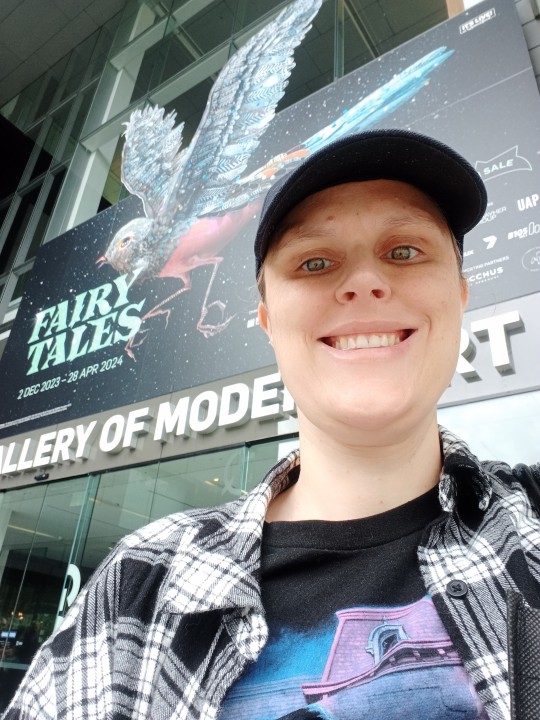#patricia moffatt
Explore tagged Tumblr posts
Text
On December 24, 1977, three aliens and their probe visited Earth to find out the meaning of the Bethlehem star. Unfortunately, they were almost 2000 years too late. They met up with a boy named Peter and his pet goose who attempted to explain the true meaning of Christmas. ("A Cosmic Christmas" Cartoon TV Event)

#nerds yearbook#sci fi tv#cartoon#animation#nelvana#christmas special#christmas eve#christmas#december#1977#alien#ufo#clive a smith#patrick loubert#ida nelson#laura paull#ken sobol#martin lavut#joey davidson#peter#dad#richard m davidson#lexicon#duncan regehr#amalthor#patricia moffatt#mom#jane mallett#grandma
19 notes
·
View notes
Text











🌈 Queer Books Coming Out in November 2024 🌈
🌈 Good morning, my bookish bats! Here are a FEW of the stunning, diverse queer books you can add to your TBR before the year is over. Happy reading!
❓What was the last queer book you read?
[ Release dates may have changed. ]
❤️ I Am the Dark That Answers When You Call - Jamison Shea 🧡 Snowed in With You - Reba Bale 💛 Fire Spells Between Friends - Sarah Wallace & S.O. Callahan 💚 Ho Ho Homicidal Maniac - K.A. Merikan 💙 Escape to the Sea - Alex Callan & Angelica Babineaux 💜 She's Always Hungry - Eliza Clark 💛 Phoenix Rising - Emily Hayes 💙 A Flower's Fatal Thorn - Jordan Dugdale 💜 A Sharper, More Lasting Pain - Alex Harvey-Rivas
❤️ The Librarian's Gargoyle - Evelyn Shine 🧡 Dead Girls Don't Dream - Nino Cipri 💛 Of Hoarfrost and Blood - Scarlet Tempest 💚 Judgement - Lucas Delrose 💙 Deadline for Love - Candi Tab 💜 Wake Up, Nat & Darcy - Kate Cochrane ❤️ All the Truth I Can Stand - Mason Stokes 🧡 Celia - Addison James 💛 A Diamond Bright and Broken - Holly Davis 💙 Hexed - Emily McIntire 💜 Hometown Christmas - Laura Conway 🌈 This Christmas - Georgia Beers
❤️ Suite Heart - Jade Winters 🧡 We All Fall - Arden Coutts 💛 Taiwan Travelogue - Yáng Shuāng-zǐ 💚 Pit Stop - L.M. Bennett 💙 The Damaged Hearts Bargain - Sienna Waters 💜 War of Night - Greyson Black & E. Scott Clevenger 🧡 I'll be Boned for Christmas - Katherine McIntyre 💜 All You Want for the Holidays - Quinton Li 🌈 Queer as Folklore - Sacha Coward
❤️ Time and Tide - J.M. Frey 🧡 Ghost of the Heart - Catherine Friend 💛 Flopping in a Winter Wonderland - Jason June 💚 All the Painted Stars - Emma Denny 💙 Currency in Flesh - Heather Nix 💜 I Really Do - Emily K. Hardy ❤️ Something Close to God - Erika del Carmen Ruiz 🧡 The Crack at the Heart of Everything - Fiona Fenn 💛 Undeniable You - Chelsea M. Cameron 💙 The Twice-Sold Soul - Katie Hallahan 💜 Always on My Mind - Kelsey Painter 🌈 Interstellar MegaChef - Lavanya Lakshminarayan
❤️ Don't Break Character - Jules Landry 🧡 Rani Choudhury Must Die - Adiba Jaigirdar 💛 Remnants of Filth: Yuwu - Rou Bao Bu Chi Rou 💚 Sugar, Spice, and Christmas Nice - Anne Hagan 💙 The Wishing Tree - Barbara Winkes 💜 Love on Moonlight Lake - Adriana Sargent ❤️ Mistletoe Motel - Lise Gold 🧡 The Royal They - KJ Sinclair 💛 My So-Called Family - Gia Gordon 💙 Frosted by the Girl Next Door - Aurora Rey & Jaime Clevenger 💜 The Star-Crossed Empire - Maya Darjani 🌈 A Hard Fit - Jennifer Moffatt
❤️ The Sacred Heart Motel - Grace Kwan 🧡 Leap - Simina Popescu 💛 I Dare You - Regena Mercy 💚 Love Lessons - Mary Ellen Capek 💙 Afterglow - Emily Antoinette 💜 In the Back Row With You - Natasha West ❤️ Make Room for Love - Darcy Liao 🧡 Here Goes Nothing - Emma K. Ohland Just for the Holidays - Micah Carver
❤️ Cookies, Candles, and Cute Butts for Christmas - Cameron D. James & Cali Kitsu 🧡 Objects in Mirror - N.W. Downs 💛 Sleigh Bells Ring - Alyson Root 💚 Real Tree / Fake Boyfriend - Ree Thomas 💙 Out of the Storm - Logan Sage Adams 💜 Hungry Heart - Jem Milton ❤️ A Wild and Ruined Song - Ashley Shuttleworth 🧡 Beneath Her Power - Margaux Fox 💛 Thanks for Listening - Molly Horan 🌈 The Lotus Empire - Tasha Suri
❤️ Naughty November - Anthology 🧡 Hearts and Stars - Phoenix Kathryn 💛 Guarding Her Gangster Queen - Persephone Black 💚 The Shadow Spinner - Eric Kao 💙 Black, Queer, and Untold - Jon Key 💜 Hall of Shadows - Mariah Stillbrook ❤️ The Last Hour Between Worlds - Melissa Caruso 🧡 A Crimson Covenant - Aimee Donnellan 💛 Isaac - Curtis Garner 💙 Vineyard Dreams - Carol Wyatt 💜 Kiss of Death - Bryony Rosehurst 🌈 The Many Mistakes of Amy Love - RA Hunter
❤️ Accidentally in Love - Kimberly Cooper Griffin 🧡 Unwrapped - D. Jackson Leigh 💛 Hot Honey Love - Nan Campbell 💚 Havoc for the Holidays - Jay Leigh 💙 London - Patricia Evans 💜 Fatal Foul Play - David S. Pederson ❤️ The Gift of Us - Abigail Taylor 🧡 Upon the Midnight Queer - 'Nathan Burgoine 💛 The Christmas Pic - Rena Sapon-White & Ella Schaefer 💙 Seducing Scylla - Lex Logan 💜 Fated Winds and Promising Seas - Rose Black 🌈 A Surprise For The Holidays - Anna Sparrows
❤️ Immortal Hunger - KL Bone 🧡 Love and Loyalty - Emily Hayes 💛 A Kingdom of Lies - Ben Alderson 💚 Christmas Dreams - Carol Wyatt 💙 Wrecked for the Holidays - Kerry Kilpatrick ❤️ Not for the Faint of Heart - Lex Croucher 🧡 Phoenix Found - T.J. Nichols 💛 Room for Two - Rochelle Wolf 💙 The Long Winter of Miðgarðr - Edale Lan 💜 A Handyman for the Holidays - Valerie Gomez 🌈 Sundown in San Ojuela - M.M. Olivas
#books#new books#book releases#queer#queer books#queer romance#queer pride#queer community#read queer all year#book reader#booklr#book reading#book list#book release#batty about books#battyaboutbooks#bisexual romance#bisexual visibility#bisexuality#bi books#sapphic books#sapphic romance#gay romance#gay pride#gay#wlw romance#wlw fiction#wlw
53 notes
·
View notes
Text




















Just got back from the Fairy Tales Exhibition at GOMA. Where I got to view art works from feature artists Abdul Abdullah, Del Kathryn Barton, Destiny Deacon, Gustave Doré, Rachel Feinstein, Trulee Hall, Carsten Höller, Anish Kapoor, Yayoi Kusama, Ron Mueck, Tracey Moffatt, Henrique Oliveira, Polixeni Papapetrou, Patricia Piccinini, Kiki Smith, Jana Sterbak and many others.
They also feature film costumes and props from Mirror Mirror (2012), The Labyrinth (1986), Tim Burton’s Alice in Wonderland (2010), etc.
#FAIRYTALESGOMA#Fairy Tales#GOMA#Queensland Art Gallery#South Brisbane#Mirror Mirror 2012#The Labyrinth 1986#Tim Burton's Alice in Wonderland 2010#Tim Burton#Cinderella#Costumes#Props#Movies#TV#Fantasy#Magic#Where the Wild Things Are#Beauty and the Beast 1946#Jim Henson#Toys
69 notes
·
View notes
Text
i would really love to write the following muses, so if anyone wants to plot with them or send memes or something, i highly encourage reaching out!
lilith of borderlands
patricia tannis
karen smith
regina george
lilia calderu
sharon davis / mrs. hart
aaron hotchner
karen wheeler
tess servopoulos
abigail blyg
gerri moffatt (oc)
ainsley summers (oc)
4 notes
·
View notes
Link
For just $3.99 Released on July 15, 1944: Three teenage high school girls get mixed up with boys, cars, nightclubs and crime and it will end in death for one of them. Genre: Crime Duration: 1h 12min Director: Albert Herman Actors: June Carlson (June Thompson), Fifi D'Orsay (Mimi), Teala Loring (Sally Higgins), Mary Bovard (Betty Smith), Margia Dean (Francine Van Pelt), Johnny Duncan (Rocky Webster), Joe Devlin (Detective Hanahan), Jimmy Zahner (Jerry Sykes), John Dawson (Nick Gordon), Frank McGlynn Sr. (Judge Craig), Parker Gee (Steve Cronin, newspaper reporter), Warren Mills (Roy Ford), John Christian (Mr. Thompson), Frank Stephens (Mr. Webster), Floyd Criswell (Detective Joe Miller), John Valentine (Mr. Moffatt, school principal), Belle Thomas (waitress), Sheila Roberts (waitress), Norval Mitchell (paymaster), Juan de la Cruz (Mr. Barrows), Sheilah Roddick (Mrs. Van Pelt), John Bridges (candy store owner), Roy Butler (diner counter man), Willis Clare (Mr. Higgins), George Kirby (gas station attendant), Patricia Knox (teen), Wally West (customer) *** This item will be supplied on a quality disc and will be sent in a sleeve that is designed for posting CD's DVDs *** This item will be sent by 1st class post for quick delivery. Should you not receive your item within 12 working days of making payment, please contact me so we can solve this or any other questions. Note: All my products are either my own work, licensed to me directly or supplied to me under a GPL/GNU License. No Trademarks, copyrights or rules have been violated by this item. This product complies with rules on compilations, international media, and downloadable media. All items are supplied on CD or DVD.
0 notes
Text
Innovative Mental Health Strategies: mental health is not criminal justice
There has been a common trend over the past few decades to deinstitutionalize psychiatric services in Canada. In fact, “deinstitutionalization of psychiatric services in 1960s and 1970s and has been continuous for the past 40 years.”[1] Due to the lack of psychiatric facilities, the consequence of this trend has led patients to be discharged into the community.[2] This has left a growing gap in social services supports for our most vulnerable populations who struggle with psychiatric issues. Growing up with a parent who struggled with psychiatric illness, this has led me to invest a lot of time over the years to understand the prevalence of vulnerable people who end up in the criminal justice system and what becomes of them.[3] The literature regarding this issue seems to suggest that due to the lack of supports at the community level, this has left a vulnerable population inappropriately locked up in prisons rather than being treated for their illness.
The Canadian Alliance on Mental Illness and Mental Health reports that the “criminal justice system is rapidly becoming the largest mental health provider in the country.”[4] In addition, the World Health Organization reports that due to the lack of social supports, prisons have “sometimes been used as a dumping ground for people with mental disorders.”[5] Canada has not been immune to this trend and the data suggests that individuals who have complex mental health needs are becoming more criminalized and advancing through the criminal justice system at an alarming rate. For example, Correctional Services of Canada (CSC) has reported that the “proportion of federal offenders with significant mental health needs have more than doubled between 1997 and 2008.” [6] The data suggest that this trend does not seem to be subsiding. In fact, the Office of the Correctional Investigator reports that mental health disorders in Canadian prisons are two to three times more common than in the general community.[7] Not only is it more common for individuals with mental health needs to be incarcerated, the data also seems to suggest that “people with mental illness face a higher risk of arrest… than the general population.”[8] The Canadian Mental Health Association “attributes the expanding rate of incarceration of individuals with mental health problems and mental illnesses is due to the lack of a national mental health strategy for Canada.”[9]
Not only are vulnerable people being inappropriately locked up in prisons rather than being treated for their illness, the trend seems to also suggest that mental illness is a driver of costs in the criminal justice system.[10] A study conducted in 2016 out of Alberta reports that as complex needs cases advance through the criminal justice system, so does the cost on the system and to taxpayers.[11] This is an expensive solution “given that the length of stay in a federal penitentiary is a minimum of 2 years and costs the Canadian taxpayer the amount of $189,106.50 annually.”[12] There are more effective ways to reduce costs then locking away the problem. A mental health strategy that provides proper interventions at earlier stages in the criminal justice process should be a critical goal for government and policy makers. Research shows that there are many points of intercepts [13] where thoughtful interventions can occur that focus on treatment rather than punishment to reduce days in custody and recidivism rates for offenders with mental health needs. These interventions could promote stabilization and recovery for vulnerable people and offer long term solutions.
There is no doubt that the issues surrounding mental health in the criminal justice system are complex and challenging, however a lack of mental health strategies are placing a large burden on our system. One innovative solution that can be created to combat this issue is an Interdisciplinary Criminal Advocacy Team (ICAT), which is a one stop shop that provides case management and long-term interventions to assist vulnerable individuals in conflict with the law to prevent their advancement to subsequent stages within the criminal justice system. This model of treatment would focus on rehabilitation rather than punishment. The mission of the ICAT team would provide interventions at every stage in the criminal justice system to promote stabilization and recovery in vulnerable populations. This model is based off the Sequential Intercept Model that allows for “a series of points of interception at which an intervention can be made to prevent individuals from entering or penetrating deeper into the criminal justice system.”[14] Ideally, “most people will be intercepted at early points.”[15] There are multiple interception points where individuals could be referred to ICAT including “law enforcement and emergency services; initial detention and initial hearings; jail, courts, forensic evaluations, and forensic commitments; re-entry from jails, prisons, and forensic hospitalization; and community corrections and community support.”[16]
This humanistic approach would encompass a wrap around service delivery model where interdisciplinary professionals such as Lawyers, Psychologists, Psychiatrist, Addictions Counsellors, Case Managers and Social Workers work together under one roof as a team to treat individuals in conflict with the law by offering rehabilitation rather than punishment. The goal would be to treat the cause of offending behaviours and to reduce recidivism rates and days in custody. The Interdisciplinary Criminal Advocacy Team would be a better use of taxpayer dollars as it would operate under a non-profit organization and it would be governed by a Board of Directors using service delivery guidelines and outcome measures. This framework would be cost effective as professionals would be paid a base salary under a general operating budget rather than accumulating expensive outside consulting fees or private practice costs. In addition, taxpayer costs would be reduced, and efficiencies would be maximized because the team would work closely together and operate without service gaps to meet the needs of the clients at earlier stages. This framework would allow professionals to properly manage these cases and provide long-term interventions so vulnerable individuals in conflict with the law do not advance to subsequent stages within the criminal justice system.
Endnotes
[1] Patricia Sealy & Paul Whitehead, “Forty Years of Deinstitutionalization of Psychiatric Services in Canada” An Empirical Assessment (2011), 49:4 Canadian Journal of Psychiatry 249-257 at 249.
[2] Ibid.
[3] “Law Students willingly work overtime to present at Accessing Justice” UM Today News (27 April 2018) online: <http://bit.ly/2H4G5if;.
[4] “Criminal Justice System; The Largest Mental Health Provider in the Country” (8 February 2015), online: Canadian Alliance on Mental Illness and Mental Health <http://bit.ly/2REhLIc;.
[5] “Mental Health and Prisons,” online: World Health Organization, <http://bit.ly/2H3080j;.
[6] Howard Sapers, “Mental Health and Corrections” (2011), online: Office of the Correctional Investigator <http://bit.ly/2RLKPO4;.
[7] Ibid.
[8] Alene Kennedy-Hendrick, Haiden A. Huskamp, Lainie Rutkow, Colleen L. Barry, “Improving Access to Care and Reducing Involvement in the Criminal Justice system for People with Mental Illness” (2016) 35:6 Health Affairs, Health Aff 1 at 6.
[9] “Mental Health Strategy for Corrections in Canada,” online: Federal-Provincial-Territorial Working Group in Mental Heath <http://bit.ly/2H3094n;.
[10] Philip Jacobs, Jessica Moffatt, Carolyn Dewa, Thanh Nguyen, Ting Zhangd, Alain Lesage, “Mental Health Services Costs Within the Alberta Criminal Justice System” (2016) 47 Intl J L and Psychiatry 102 at 102.
[11] Ibid.
[12] “Criminal Justice System; The Largest Mental Health Provider in the Country” (8 February 2015), online: Canadian Alliance on Mental Illness and Mental Health <http://bit.ly/2REhLIc;.
[13] Mark Munetz & Patricia Griffin, Use of the Sequential Intercept Model as an Approach to Decriminalization of People With Serious Mental Illness (2006), 57:4 Psychiatric Services 544-549 at 544.
[14] Ibid.
[15] Ibid.
[16] Ibid.
Innovative Mental Health Strategies: mental health is not criminal justice published first on https://divorcelawyermumbai.tumblr.com/
0 notes
Text
Innovative Mental Health Strategies: mental health is not criminal justice
There has been a common trend over the past few decades to deinstitutionalize psychiatric services in Canada. In fact, “deinstitutionalization of psychiatric services in 1960s and 1970s and has been continuous for the past 40 years.”[1] Due to the lack of psychiatric facilities, the consequence of this trend has led patients to be discharged into the community.[2] This has left a growing gap in social services supports for our most vulnerable populations who struggle with psychiatric issues. Growing up with a parent who struggled with psychiatric illness, this has led me to invest a lot of time over the years to understand the prevalence of vulnerable people who end up in the criminal justice system and what becomes of them.[3] The literature regarding this issue seems to suggest that due to the lack of supports at the community level, this has left a vulnerable population inappropriately locked up in prisons rather than being treated for their illness.
The Canadian Alliance on Mental Illness and Mental Health reports that the “criminal justice system is rapidly becoming the largest mental health provider in the country.”[4] In addition, the World Health Organization reports that due to the lack of social supports, prisons have “sometimes been used as a dumping ground for people with mental disorders.”[5] Canada has not been immune to this trend and the data suggests that individuals who have complex mental health needs are becoming more criminalized and advancing through the criminal justice system at an alarming rate. For example, Correctional Services of Canada (CSC) has reported that the “proportion of federal offenders with significant mental health needs have more than doubled between 1997 and 2008.” [6] The data suggest that this trend does not seem to be subsiding. In fact, the Office of the Correctional Investigator reports that mental health disorders in Canadian prisons are two to three times more common than in the general community.[7] Not only is it more common for individuals with mental health needs to be incarcerated, the data also seems to suggest that “people with mental illness face a higher risk of arrest… than the general population.”[8] The Canadian Mental Health Association “attributes the expanding rate of incarceration of individuals with mental health problems and mental illnesses is due to the lack of a national mental health strategy for Canada.”[9]
Not only are vulnerable people being inappropriately locked up in prisons rather than being treated for their illness, the trend seems to also suggest that mental illness is a driver of costs in the criminal justice system.[10] A study conducted in 2016 out of Alberta reports that as complex needs cases advance through the criminal justice system, so does the cost on the system and to taxpayers.[11] This is an expensive solution “given that the length of stay in a federal penitentiary is a minimum of 2 years and costs the Canadian taxpayer the amount of $189,106.50 annually.”[12] There are more effective ways to reduce costs then locking away the problem. A mental health strategy that provides proper interventions at earlier stages in the criminal justice process should be a critical goal for government and policy makers. Research shows that there are many points of intercepts [13] where thoughtful interventions can occur that focus on treatment rather than punishment to reduce days in custody and recidivism rates for offenders with mental health needs. These interventions could promote stabilization and recovery for vulnerable people and offer long term solutions.
There is no doubt that the issues surrounding mental health in the criminal justice system are complex and challenging, however a lack of mental health strategies are placing a large burden on our system. One innovative solution that can be created to combat this issue is an Interdisciplinary Criminal Advocacy Team (ICAT), which is a one stop shop that provides case management and long-term interventions to assist vulnerable individuals in conflict with the law to prevent their advancement to subsequent stages within the criminal justice system. This model of treatment would focus on rehabilitation rather than punishment. The mission of the ICAT team would provide interventions at every stage in the criminal justice system to promote stabilization and recovery in vulnerable populations. This model is based off the Sequential Intercept Model that allows for “a series of points of interception at which an intervention can be made to prevent individuals from entering or penetrating deeper into the criminal justice system.”[14] Ideally, “most people will be intercepted at early points.”[15] There are multiple interception points where individuals could be referred to ICAT including “law enforcement and emergency services; initial detention and initial hearings; jail, courts, forensic evaluations, and forensic commitments; re-entry from jails, prisons, and forensic hospitalization; and community corrections and community support.”[16]
This humanistic approach would encompass a wrap around service delivery model where interdisciplinary professionals such as Lawyers, Psychologists, Psychiatrist, Addictions Counsellors, Case Managers and Social Workers work together under one roof as a team to treat individuals in conflict with the law by offering rehabilitation rather than punishment. The goal would be to treat the cause of offending behaviours and to reduce recidivism rates and days in custody. The Interdisciplinary Criminal Advocacy Team would be a better use of taxpayer dollars as it would operate under a non-profit organization and it would be governed by a Board of Directors using service delivery guidelines and outcome measures. This framework would be cost effective as professionals would be paid a base salary under a general operating budget rather than accumulating expensive outside consulting fees or private practice costs. In addition, taxpayer costs would be reduced, and efficiencies would be maximized because the team would work closely together and operate without service gaps to meet the needs of the clients at earlier stages. This framework would allow professionals to properly manage these cases and provide long-term interventions so vulnerable individuals in conflict with the law do not advance to subsequent stages within the criminal justice system.
Endnotes
[1] Patricia Sealy & Paul Whitehead, “Forty Years of Deinstitutionalization of Psychiatric Services in Canada” An Empirical Assessment (2011), 49:4 Canadian Journal of Psychiatry 249-257 at 249.
[2] Ibid.
[3] “Law Students willingly work overtime to present at Accessing Justice” UM Today News (27 April 2018) online: <http://bit.ly/2H4G5if;.
[4] “Criminal Justice System; The Largest Mental Health Provider in the Country” (8 February 2015), online: Canadian Alliance on Mental Illness and Mental Health <http://bit.ly/2REhLIc;.
[5] “Mental Health and Prisons,” online: World Health Organization, <http://bit.ly/2H3080j;.
[6] Howard Sapers, “Mental Health and Corrections” (2011), online: Office of the Correctional Investigator <http://bit.ly/2RLKPO4;.
[7] Ibid.
[8] Alene Kennedy-Hendrick, Haiden A. Huskamp, Lainie Rutkow, Colleen L. Barry, “Improving Access to Care and Reducing Involvement in the Criminal Justice system for People with Mental Illness” (2016) 35:6 Health Affairs, Health Aff 1 at 6.
[9] “Mental Health Strategy for Corrections in Canada,” online: Federal-Provincial-Territorial Working Group in Mental Heath <http://bit.ly/2H3094n;.
[10] Philip Jacobs, Jessica Moffatt, Carolyn Dewa, Thanh Nguyen, Ting Zhangd, Alain Lesage, “Mental Health Services Costs Within the Alberta Criminal Justice System” (2016) 47 Intl J L and Psychiatry 102 at 102.
[11] Ibid.
[12] “Criminal Justice System; The Largest Mental Health Provider in the Country” (8 February 2015), online: Canadian Alliance on Mental Illness and Mental Health <http://bit.ly/2REhLIc;.
[13] Mark Munetz & Patricia Griffin, Use of the Sequential Intercept Model as an Approach to Decriminalization of People With Serious Mental Illness (2006), 57:4 Psychiatric Services 544-549 at 544.
[14] Ibid.
[15] Ibid.
[16] Ibid.
Innovative Mental Health Strategies: mental health is not criminal justice published first on https://medium.com/@SanAntonioAttorney
0 notes
Text
Dave’s Faves for the Menzies Auction on 9 August 2018
Menzies' Winter Auction in Sydney on 9 August incorporates some very interesting collections.
Lots 1 - 20 and then again lots 81 - 114 are from the Sandra and Peter Geyer collection of contemporary art, and it is a cracking offering: sculpture, photography, works on paper, oils, Australian and international by some of the greatest names in contemporary art - Antony Gormley, William Kentridge, Bill Henson, Noel McKenna, Tracey Moffatt, the list goes on. Plus they come with the excellent provenance of some of Australia's premier contemporary art galleries.
Another bonus is the lower entry point for contemporary art: estimates for some works start from just $2,000.
Lots 115 - 134 represent Australian Indigenous art from the Dr. Michael and Mrs Patricia Bernard collection, and boasts as well some of the outstanding artists in this field: Emily Kngwarreye, Rover Thomas, Minnie Pwerle to name a few.
The auction is an extensive offering with 176 lots, and well worth visiting in person:
in Melbourne from you can view from 26 to 29 July, at 1 Darling Street, South Yarra,
in Sydney from 2 to 9 August at 12 Todman Avenue, Kensington.
For due diligence and advice on any artworks in this sale before purchase and bidding on the night, contact us on [email protected] or 02 9977 7764.
We would be delighted to assist you as a sounding board with expert intelligence on the Australian art market to further your collection.
You can view the whole catalogue at the Menzies website.
And here are your Dave's Faves:
[caption id="attachment_4972" align="alignleft" width="227"] Lot 1 - Jan Nelson, Walking in Tall Grass, Olivia, 77 x 59 cm, est. $12,000-16,000. Not Happy Jan[/caption]
[caption id="attachment_4973" align="alignleft" width="178"] Lot 5 - Noel McKenna, Vase with Musical Notes, 29 cm high, est. $2,500-3,500. More Tweets Than Donald Trump[/caption]
[caption id="attachment_4975" align="alignleft" width="200"] Lot 8 - Sally Gabori, Dibirdibi Country, 152 x 101.5 cm, est. $7,000-10,000. A Long Tall Sally[/caption]
[caption id="attachment_4976" align="alignleft" width="218"] Lot 21 - Brett Whiteley, Female Nude, 75.5 x 55 cm, est. $20,000-30,000. In the Pink in Ink[/caption]
[caption id="attachment_4977" align="alignleft" width="300"] Lot 32 - Arthur Boyd, Bride Dreaming by a Pool, 122 x 153 cm, est. $200,000-300,000. Married at First Sight[/caption]
[caption id="attachment_4978" align="alignleft" width="268"] Lot 36 - Brett Whiteley, The Dove and the Moon, 52.5 x 47.5 cm, est. $450,000-550,000. I'm Coming Over all Lovey Dovey[/caption]
[caption id="attachment_4979" align="alignleft" width="300"] Lot 37 - Jeffrey Smart, Bus by the Tiber, 66 x 84 cm, est. $750,000-950,000. Don't Miss This Bus[/caption]
[caption id="attachment_4980" align="alignleft" width="159"] Lot 40 - Arthur Streeton, Self Portrait, 61.5 x 33 cm, est. $40,000-60,000. Streeton Strutts His Stuff[/caption]
[caption id="attachment_4981" align="alignleft" width="198"] Lot 42 - Charles Blackman, An Illusion of Children, 137.5 x 91.5 cm, est. $80,000-120,000. This Painting With The X Factor was Owned by Max Factor[/caption]
[caption id="attachment_4982" align="alignleft" width="218"] Lot 51 - Justin O'Brien, Panegyric Skyros, 40.5 x 29.5 cm, est. $20,000-30,000. Hallelujah![/caption]
[caption id="attachment_4983" align="alignleft" width="300"] Lot 53 - John Kelly, Stig, 45.5 x 60 cm, est. $8,000-12,000. Can You Top This Gear?[/caption]
[caption id="attachment_4984" align="alignleft" width="300"] Lot 65 - Fred Williams, Almerton Landscape, 36.5 x 54 cm, est. $14,000-18,000. Gouache Not Gauche[/caption]
[caption id="attachment_4995" align="alignleft" width="300"] Lot 66 - Hans Heysen, The Quarries, Mount Lofty, 32 x 40 cm, est. $15,000-20,000. Magic Mountain[/caption]
[caption id="attachment_4985" align="alignleft" width="269"] Lot 71 - John Olsen, Frog, 36.5 x 33 cm, est. $5,000-7,000. Froggy Fun For All[/caption]
[caption id="attachment_4986" align="alignleft" width="300"] Lot 72 - William Robinson, Afternoon Light, Darlington, 22.5 x 32.5 cm, est. $5,000-7,000. Billy Boils[/caption]
[caption id="attachment_4987" align="alignleft" width="280"] Lot 113 - Max Dupain, Opera House in Construction - Stage 1, 41.5 x 39 cm, est. $3,000-4,000. Camera Obscura[/caption]
[caption id="attachment_4988" align="alignleft" width="300"] Lot 120 - Minnie Pwerle, Awelye Atnwengerrp, 91.5 x 122 cm, est. $5,000-7,000. Pearl of a Pwerle[/caption]
[caption id="attachment_4989" align="alignleft" width="300"] Lot 141 - Tim Storrier, Dusk - The Night Runner, 103 x 151.5 cm, est. $20,000-28,000. Run This One Up[/caption]
[caption id="attachment_4990" align="alignleft" width="300"] Lot 149 - James R. Jackson, Middle Harbour, Sydney, 43 x 53 cm, est. $5,000-7,000. Trip The Light Fantastic[/caption]
[caption id="attachment_4991" align="alignleft" width="300"] Lot 151 - Charles Meere, Viaduct (Dinan sur la Rance), 44.5 x 55.5 cm, est. $5,000-8,000. Not Quite A Weir from Meere[/caption]
[caption id="attachment_4992" align="alignleft" width="300"] Lot 165 - Giorgio de Chirico, Untitled (Study of a Horse), 21.5 x 29 cm, est. $5,000-8,000. It's a Horse of Course[/caption]
[caption id="attachment_4993" align="alignleft" width="128"] Lot 171 - Brett Whiteley, Vincent (An Essay in Opposites), 211 x 91.5 cm, est. $8,000-12,000. Have You Got The Eye?[/caption]
Dave’s Faves for the Menzies Auction on 9 August 2018 is republished from: http://bhfineart.com
0 notes
Audio
Episode 13 - The River Sulks In Its Cage by 41256 Bits of sound. Short. Every Sunday. An audio commonplace. Patricia Williams Freedom, Books, Flowers & The Moon: The Problem We All Still Live With https://ift.tt/2HwPjQW Gwen Moffatt - Radio 3 - Give Me Space Below My Feet https://ift.tt/2GSfvUZ Alice Oswald, Between The Ears - Radio 3 - Rain https://ift.tt/2Hw3tBS
0 notes
Text
Innovative Mental Health Strategies: mental health is not criminal justice
There has been a common trend over the past few decades to deinstitutionalize psychiatric services in Canada. In fact, “deinstitutionalization of psychiatric services in 1960s and 1970s and has been continuous for the past 40 years.”[1] Due to the lack of psychiatric facilities, the consequence of this trend has led patients to be discharged into the community.[2] This has left a growing gap in social services supports for our most vulnerable populations who struggle with psychiatric issues. Growing up with a parent who struggled with psychiatric illness, this has led me to invest a lot of time over the years to understand the prevalence of vulnerable people who end up in the criminal justice system and what becomes of them.[3] The literature regarding this issue seems to suggest that due to the lack of supports at the community level, this has left a vulnerable population inappropriately locked up in prisons rather than being treated for their illness.
The Canadian Alliance on Mental Illness and Mental Health reports that the “criminal justice system is rapidly becoming the largest mental health provider in the country.”[4] In addition, the World Health Organization reports that due to the lack of social supports, prisons have “sometimes been used as a dumping ground for people with mental disorders.”[5] Canada has not been immune to this trend and the data suggests that individuals who have complex mental health needs are becoming more criminalized and advancing through the criminal justice system at an alarming rate. For example, Correctional Services of Canada (CSC) has reported that the “proportion of federal offenders with significant mental health needs have more than doubled between 1997 and 2008.” [6] The data suggest that this trend does not seem to be subsiding. In fact, the Office of the Correctional Investigator reports that mental health disorders in Canadian prisons are two to three times more common than in the general community.[7] Not only is it more common for individuals with mental health needs to be incarcerated, the data also seems to suggest that “people with mental illness face a higher risk of arrest… than the general population.”[8] The Canadian Mental Health Association “attributes the expanding rate of incarceration of individuals with mental health problems and mental illnesses is due to the lack of a national mental health strategy for Canada.”[9]
Not only are vulnerable people being inappropriately locked up in prisons rather than being treated for their illness, the trend seems to also suggest that mental illness is a driver of costs in the criminal justice system.[10] A study conducted in 2016 out of Alberta reports that as complex needs cases advance through the criminal justice system, so does the cost on the system and to taxpayers.[11] This is an expensive solution “given that the length of stay in a federal penitentiary is a minimum of 2 years and costs the Canadian taxpayer the amount of $189,106.50 annually.”[12] There are more effective ways to reduce costs then locking away the problem. A mental health strategy that provides proper interventions at earlier stages in the criminal justice process should be a critical goal for government and policy makers. Research shows that there are many points of intercepts [13] where thoughtful interventions can occur that focus on treatment rather than punishment to reduce days in custody and recidivism rates for offenders with mental health needs. These interventions could promote stabilization and recovery for vulnerable people and offer long term solutions.
There is no doubt that the issues surrounding mental health in the criminal justice system are complex and challenging, however a lack of mental health strategies are placing a large burden on our system. One innovative solution that can be created to combat this issue is an Interdisciplinary Criminal Advocacy Team (ICAT), which is a one stop shop that provides case management and long-term interventions to assist vulnerable individuals in conflict with the law to prevent their advancement to subsequent stages within the criminal justice system. This model of treatment would focus on rehabilitation rather than punishment. The mission of the ICAT team would provide interventions at every stage in the criminal justice system to promote stabilization and recovery in vulnerable populations. This model is based off the Sequential Intercept Model that allows for “a series of points of interception at which an intervention can be made to prevent individuals from entering or penetrating deeper into the criminal justice system.”[14] Ideally, “most people will be intercepted at early points.”[15] There are multiple interception points where individuals could be referred to ICAT including “law enforcement and emergency services; initial detention and initial hearings; jail, courts, forensic evaluations, and forensic commitments; re-entry from jails, prisons, and forensic hospitalization; and community corrections and community support.”[16]
This humanistic approach would encompass a wrap around service delivery model where interdisciplinary professionals such as Lawyers, Psychologists, Psychiatrist, Addictions Counsellors, Case Managers and Social Workers work together under one roof as a team to treat individuals in conflict with the law by offering rehabilitation rather than punishment. The goal would be to treat the cause of offending behaviours and to reduce recidivism rates and days in custody. The Interdisciplinary Criminal Advocacy Team would be a better use of taxpayer dollars as it would operate under a non-profit organization and it would be governed by a Board of Directors using service delivery guidelines and outcome measures. This framework would be cost effective as professionals would be paid a base salary under a general operating budget rather than accumulating expensive outside consulting fees or private practice costs. In addition, taxpayer costs would be reduced, and efficiencies would be maximized because the team would work closely together and operate without service gaps to meet the needs of the clients at earlier stages. This framework would allow professionals to properly manage these cases and provide long-term interventions so vulnerable individuals in conflict with the law do not advance to subsequent stages within the criminal justice system.
Endnotes
[1] Patricia Sealy & Paul Whitehead, “Forty Years of Deinstitutionalization of Psychiatric Services in Canada” An Empirical Assessment (2011), 49:4 Canadian Journal of Psychiatry 249-257 at 249.
[2] Ibid.
[3] “Law Students willingly work overtime to present at Accessing Justice” UM Today News (27 April 2018) online: <http://bit.ly/2H4G5if;.
[4] “Criminal Justice System; The Largest Mental Health Provider in the Country” (8 February 2015), online: Canadian Alliance on Mental Illness and Mental Health <http://bit.ly/2REhLIc;.
[5] “Mental Health and Prisons,” online: World Health Organization, <http://bit.ly/2H3080j;.
[6] Howard Sapers, “Mental Health and Corrections” (2011), online: Office of the Correctional Investigator <http://bit.ly/2RLKPO4;.
[7] Ibid.
[8] Alene Kennedy-Hendrick, Haiden A. Huskamp, Lainie Rutkow, Colleen L. Barry, “Improving Access to Care and Reducing Involvement in the Criminal Justice system for People with Mental Illness” (2016) 35:6 Health Affairs, Health Aff 1 at 6.
[9] “Mental Health Strategy for Corrections in Canada,” online: Federal-Provincial-Territorial Working Group in Mental Heath <http://bit.ly/2H3094n;.
[10] Philip Jacobs, Jessica Moffatt, Carolyn Dewa, Thanh Nguyen, Ting Zhangd, Alain Lesage, “Mental Health Services Costs Within the Alberta Criminal Justice System” (2016) 47 Intl J L and Psychiatry 102 at 102.
[11] Ibid.
[12] “Criminal Justice System; The Largest Mental Health Provider in the Country” (8 February 2015), online: Canadian Alliance on Mental Illness and Mental Health <http://bit.ly/2REhLIc;.
[13] Mark Munetz & Patricia Griffin, Use of the Sequential Intercept Model as an Approach to Decriminalization of People With Serious Mental Illness (2006), 57:4 Psychiatric Services 544-549 at 544.
[14] Ibid.
[15] Ibid.
[16] Ibid.
Innovative Mental Health Strategies: mental health is not criminal justice published first on https://divorcelawyermumbai.tumblr.com/
0 notes
Text
Innovative Mental Health Strategies: mental health is not criminal justice
There has been a common trend over the past few decades to deinstitutionalize psychiatric services in Canada. In fact, “deinstitutionalization of psychiatric services in 1960s and 1970s and has been continuous for the past 40 years.”[1] Due to the lack of psychiatric facilities, the consequence of this trend has led patients to be discharged into the community.[2] This has left a growing gap in social services supports for our most vulnerable populations who struggle with psychiatric issues. Growing up with a parent who struggled with psychiatric illness, this has led me to invest a lot of time over the years to understand the prevalence of vulnerable people who end up in the criminal justice system and what becomes of them.[3] The literature regarding this issue seems to suggest that due to the lack of supports at the community level, this has left a vulnerable population inappropriately locked up in prisons rather than being treated for their illness.
The Canadian Alliance on Mental Illness and Mental Health reports that the “criminal justice system is rapidly becoming the largest mental health provider in the country.”[4] In addition, the World Health Organization reports that due to the lack of social supports, prisons have “sometimes been used as a dumping ground for people with mental disorders.”[5] Canada has not been immune to this trend and the data suggests that individuals who have complex mental health needs are becoming more criminalized and advancing through the criminal justice system at an alarming rate. For example, Correctional Services of Canada (CSC) has reported that the “proportion of federal offenders with significant mental health needs have more than doubled between 1997 and 2008.” [6] The data suggest that this trend does not seem to be subsiding. In fact, the Office of the Correctional Investigator reports that mental health disorders in Canadian prisons are two to three times more common than in the general community.[7] Not only is it more common for individuals with mental health needs to be incarcerated, the data also seems to suggest that “people with mental illness face a higher risk of arrest… than the general population.”[8] The Canadian Mental Health Association “attributes the expanding rate of incarceration of individuals with mental health problems and mental illnesses is due to the lack of a national mental health strategy for Canada.”[9]
Not only are vulnerable people being inappropriately locked up in prisons rather than being treated for their illness, the trend seems to also suggest that mental illness is a driver of costs in the criminal justice system.[10] A study conducted in 2016 out of Alberta reports that as complex needs cases advance through the criminal justice system, so does the cost on the system and to taxpayers.[11] This is an expensive solution “given that the length of stay in a federal penitentiary is a minimum of 2 years and costs the Canadian taxpayer the amount of $189,106.50 annually.”[12] There are more effective ways to reduce costs then locking away the problem. A mental health strategy that provides proper interventions at earlier stages in the criminal justice process should be a critical goal for government and policy makers. Research shows that there are many points of intercepts [13] where thoughtful interventions can occur that focus on treatment rather than punishment to reduce days in custody and recidivism rates for offenders with mental health needs. These interventions could promote stabilization and recovery for vulnerable people and offer long term solutions.
There is no doubt that the issues surrounding mental health in the criminal justice system are complex and challenging, however a lack of mental health strategies are placing a large burden on our system. One innovative solution that can be created to combat this issue is an Interdisciplinary Criminal Advocacy Team (ICAT), which is a one stop shop that provides case management and long-term interventions to assist vulnerable individuals in conflict with the law to prevent their advancement to subsequent stages within the criminal justice system. This model of treatment would focus on rehabilitation rather than punishment. The mission of the ICAT team would provide interventions at every stage in the criminal justice system to promote stabilization and recovery in vulnerable populations. This model is based off the Sequential Intercept Model that allows for “a series of points of interception at which an intervention can be made to prevent individuals from entering or penetrating deeper into the criminal justice system.”[14] Ideally, “most people will be intercepted at early points.”[15] There are multiple interception points where individuals could be referred to ICAT including “law enforcement and emergency services; initial detention and initial hearings; jail, courts, forensic evaluations, and forensic commitments; re-entry from jails, prisons, and forensic hospitalization; and community corrections and community support.”[16]
This humanistic approach would encompass a wrap around service delivery model where interdisciplinary professionals such as Lawyers, Psychologists, Psychiatrist, Addictions Counsellors, Case Managers and Social Workers work together under one roof as a team to treat individuals in conflict with the law by offering rehabilitation rather than punishment. The goal would be to treat the cause of offending behaviours and to reduce recidivism rates and days in custody. The Interdisciplinary Criminal Advocacy Team would be a better use of taxpayer dollars as it would operate under a non-profit organization and it would be governed by a Board of Directors using service delivery guidelines and outcome measures. This framework would be cost effective as professionals would be paid a base salary under a general operating budget rather than accumulating expensive outside consulting fees or private practice costs. In addition, taxpayer costs would be reduced, and efficiencies would be maximized because the team would work closely together and operate without service gaps to meet the needs of the clients at earlier stages. This framework would allow professionals to properly manage these cases and provide long-term interventions so vulnerable individuals in conflict with the law do not advance to subsequent stages within the criminal justice system.
Endnotes
[1] Patricia Sealy & Paul Whitehead, “Forty Years of Deinstitutionalization of Psychiatric Services in Canada” An Empirical Assessment (2011), 49:4 Canadian Journal of Psychiatry 249-257 at 249.
[2] Ibid.
[3] “Law Students willingly work overtime to present at Accessing Justice” UM Today News (27 April 2018) online: <http://bit.ly/2H4G5if;.
[4] “Criminal Justice System; The Largest Mental Health Provider in the Country” (8 February 2015), online: Canadian Alliance on Mental Illness and Mental Health <http://bit.ly/2REhLIc;.
[5] “Mental Health and Prisons,” online: World Health Organization, <http://bit.ly/2H3080j;.
[6] Howard Sapers, “Mental Health and Corrections” (2011), online: Office of the Correctional Investigator <http://bit.ly/2RLKPO4;.
[7] Ibid.
[8] Alene Kennedy-Hendrick, Haiden A. Huskamp, Lainie Rutkow, Colleen L. Barry, “Improving Access to Care and Reducing Involvement in the Criminal Justice system for People with Mental Illness” (2016) 35:6 Health Affairs, Health Aff 1 at 6.
[9] “Mental Health Strategy for Corrections in Canada,” online: Federal-Provincial-Territorial Working Group in Mental Heath <http://bit.ly/2H3094n;.
[10] Philip Jacobs, Jessica Moffatt, Carolyn Dewa, Thanh Nguyen, Ting Zhangd, Alain Lesage, “Mental Health Services Costs Within the Alberta Criminal Justice System” (2016) 47 Intl J L and Psychiatry 102 at 102.
[11] Ibid.
[12] “Criminal Justice System; The Largest Mental Health Provider in the Country” (8 February 2015), online: Canadian Alliance on Mental Illness and Mental Health <http://bit.ly/2REhLIc;.
[13] Mark Munetz & Patricia Griffin, Use of the Sequential Intercept Model as an Approach to Decriminalization of People With Serious Mental Illness (2006), 57:4 Psychiatric Services 544-549 at 544.
[14] Ibid.
[15] Ibid.
[16] Ibid.
Innovative Mental Health Strategies: mental health is not criminal justice published first on https://divorcelawyermumbai.tumblr.com/
0 notes
Text
Innovative Mental Health Strategies: mental health is not criminal justice
There has been a common trend over the past few decades to deinstitutionalize psychiatric services in Canada. In fact, “deinstitutionalization of psychiatric services in 1960s and 1970s and has been continuous for the past 40 years.”[1] Due to the lack of psychiatric facilities, the consequence of this trend has led patients to be discharged into the community.[2] This has left a growing gap in social services supports for our most vulnerable populations who struggle with psychiatric issues. Growing up with a parent who struggled with psychiatric illness, this has led me to invest a lot of time over the years to understand the prevalence of vulnerable people who end up in the criminal justice system and what becomes of them.[3] The literature regarding this issue seems to suggest that due to the lack of supports at the community level, this has left a vulnerable population inappropriately locked up in prisons rather than being treated for their illness.
The Canadian Alliance on Mental Illness and Mental Health reports that the “criminal justice system is rapidly becoming the largest mental health provider in the country.”[4] In addition, the World Health Organization reports that due to the lack of social supports, prisons have “sometimes been used as a dumping ground for people with mental disorders.”[5] Canada has not been immune to this trend and the data suggests that individuals who have complex mental health needs are becoming more criminalized and advancing through the criminal justice system at an alarming rate. For example, Correctional Services of Canada (CSC) has reported that the “proportion of federal offenders with significant mental health needs have more than doubled between 1997 and 2008.” [6] The data suggest that this trend does not seem to be subsiding. In fact, the Office of the Correctional Investigator reports that mental health disorders in Canadian prisons are two to three times more common than in the general community.[7] Not only is it more common for individuals with mental health needs to be incarcerated, the data also seems to suggest that “people with mental illness face a higher risk of arrest… than the general population.”[8] The Canadian Mental Health Association “attributes the expanding rate of incarceration of individuals with mental health problems and mental illnesses is due to the lack of a national mental health strategy for Canada.”[9]
Not only are vulnerable people being inappropriately locked up in prisons rather than being treated for their illness, the trend seems to also suggest that mental illness is a driver of costs in the criminal justice system.[10] A study conducted in 2016 out of Alberta reports that as complex needs cases advance through the criminal justice system, so does the cost on the system and to taxpayers.[11] This is an expensive solution “given that the length of stay in a federal penitentiary is a minimum of 2 years and costs the Canadian taxpayer the amount of $189,106.50 annually.”[12] There are more effective ways to reduce costs then locking away the problem. A mental health strategy that provides proper interventions at earlier stages in the criminal justice process should be a critical goal for government and policy makers. Research shows that there are many points of intercepts [13] where thoughtful interventions can occur that focus on treatment rather than punishment to reduce days in custody and recidivism rates for offenders with mental health needs. These interventions could promote stabilization and recovery for vulnerable people and offer long term solutions.
There is no doubt that the issues surrounding mental health in the criminal justice system are complex and challenging, however a lack of mental health strategies are placing a large burden on our system. One innovative solution that can be created to combat this issue is an Interdisciplinary Criminal Advocacy Team (ICAT), which is a one stop shop that provides case management and long-term interventions to assist vulnerable individuals in conflict with the law to prevent their advancement to subsequent stages within the criminal justice system. This model of treatment would focus on rehabilitation rather than punishment. The mission of the ICAT team would provide interventions at every stage in the criminal justice system to promote stabilization and recovery in vulnerable populations. This model is based off the Sequential Intercept Model that allows for “a series of points of interception at which an intervention can be made to prevent individuals from entering or penetrating deeper into the criminal justice system.”[14] Ideally, “most people will be intercepted at early points.”[15] There are multiple interception points where individuals could be referred to ICAT including “law enforcement and emergency services; initial detention and initial hearings; jail, courts, forensic evaluations, and forensic commitments; re-entry from jails, prisons, and forensic hospitalization; and community corrections and community support.”[16]
This humanistic approach would encompass a wrap around service delivery model where interdisciplinary professionals such as Lawyers, Psychologists, Psychiatrist, Addictions Counsellors, Case Managers and Social Workers work together under one roof as a team to treat individuals in conflict with the law by offering rehabilitation rather than punishment. The goal would be to treat the cause of offending behaviours and to reduce recidivism rates and days in custody. The Interdisciplinary Criminal Advocacy Team would be a better use of taxpayer dollars as it would operate under a non-profit organization and it would be governed by a Board of Directors using service delivery guidelines and outcome measures. This framework would be cost effective as professionals would be paid a base salary under a general operating budget rather than accumulating expensive outside consulting fees or private practice costs. In addition, taxpayer costs would be reduced, and efficiencies would be maximized because the team would work closely together and operate without service gaps to meet the needs of the clients at earlier stages. This framework would allow professionals to properly manage these cases and provide long-term interventions so vulnerable individuals in conflict with the law do not advance to subsequent stages within the criminal justice system.
Endnotes
[1] Patricia Sealy & Paul Whitehead, “Forty Years of Deinstitutionalization of Psychiatric Services in Canada” An Empirical Assessment (2011), 49:4 Canadian Journal of Psychiatry 249-257 at 249.
[2] Ibid.
[3] “Law Students willingly work overtime to present at Accessing Justice” UM Today News (27 April 2018) online: <http://bit.ly/2H4G5if;.
[4] “Criminal Justice System; The Largest Mental Health Provider in the Country” (8 February 2015), online: Canadian Alliance on Mental Illness and Mental Health <http://bit.ly/2REhLIc;.
[5] “Mental Health and Prisons,” online: World Health Organization, <http://bit.ly/2H3080j;.
[6] Howard Sapers, “Mental Health and Corrections” (2011), online: Office of the Correctional Investigator <http://bit.ly/2RLKPO4;.
[7] Ibid.
[8] Alene Kennedy-Hendrick, Haiden A. Huskamp, Lainie Rutkow, Colleen L. Barry, “Improving Access to Care and Reducing Involvement in the Criminal Justice system for People with Mental Illness” (2016) 35:6 Health Affairs, Health Aff 1 at 6.
[9] “Mental Health Strategy for Corrections in Canada,” online: Federal-Provincial-Territorial Working Group in Mental Heath <http://bit.ly/2H3094n;.
[10] Philip Jacobs, Jessica Moffatt, Carolyn Dewa, Thanh Nguyen, Ting Zhangd, Alain Lesage, “Mental Health Services Costs Within the Alberta Criminal Justice System” (2016) 47 Intl J L and Psychiatry 102 at 102.
[11] Ibid.
[12] “Criminal Justice System; The Largest Mental Health Provider in the Country” (8 February 2015), online: Canadian Alliance on Mental Illness and Mental Health <http://bit.ly/2REhLIc;.
[13] Mark Munetz & Patricia Griffin, Use of the Sequential Intercept Model as an Approach to Decriminalization of People With Serious Mental Illness (2006), 57:4 Psychiatric Services 544-549 at 544.
[14] Ibid.
[15] Ibid.
[16] Ibid.
Innovative Mental Health Strategies: mental health is not criminal justice published first on https://divorcelawyermumbai.tumblr.com/
0 notes